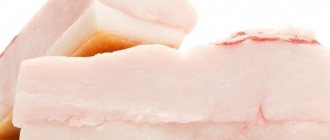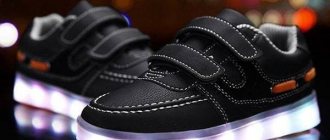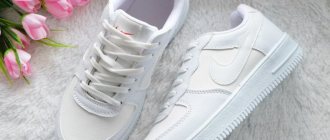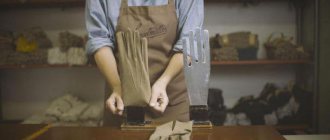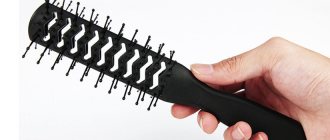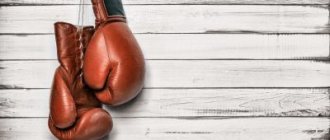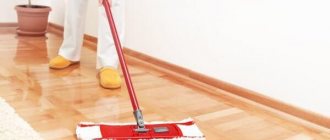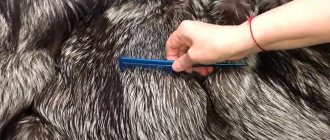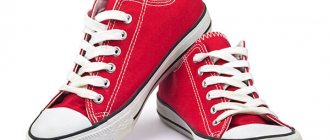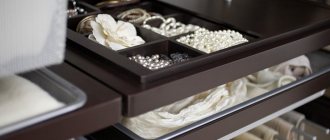American scientists who conducted a study on which inventions of the twentieth century had the greatest impact on the development of mankind put sneakers in one of the first places. Indeed, shoes, which were originally designed as sports shoes, have become the daily companion of a huge number of people around the world. The variety of models makes it a favorite shoe of millions, and the popularity of sneakers is only growing.
Sneakers are the most versatile shoes; you can wear them to the gym or on the treadmill; they will be appropriate in the office (unless, of course, you have a strict dress code) and on a walk. Sneakers are worn at any time of the year: there are lightweight models for summer holidays and insulated high boots for winter.
The best designers of well-known companies develop models so that they are beautiful, stylish, relevant, while not forgetting about the level of comfort of your feet. After all, sneakers are valued primarily for their comfort. Sneakers have taken leading positions on our shoe shelves. Both adults and children wear them. In order for sneakers to look attractive and not lose their original appearance, it is very important to properly care for this type of shoe. Caring for sneakers should be based on the material they are made of. Leather, suede, nylon, polyester are the main materials from which the upper part of the sneakers is made.
What should you think about at the purchasing stage?
Whatever model settles in your shoe closet, first of all, even before the first step outside, it needs protection. The protective product must be purchased together with a pair of sneakers in the store. There are individual protective equipment for each type of material. Quite often, sneakers are made from a combination of different materials. Therefore, you can use a universal protective spray that will protect your shoes from moisture, dirt and other external negative factors.
The protective agent is applied to new sneakers ten to twelve hours before the intended release. Suede or nubuck is initially treated three times in a row, each time waiting for the shoes to dry. Subsequently, the protective agent is applied to sneakers during intensive wear once every two weeks.
Products for self-bleaching shoes
All available products that can be used at home are divided into two types:
- professional;
- henchmen.
Shoe cosmetics
These substances, as well as special brushes, can be purchased at shoe stores or in the appropriate departments of supermarkets. There is a huge variety of these funds. The choice is yours; the main thing when purchasing is to read all the information on the label.
Professional shoe care products - photo gallery
Household products
What resourceful housewives do not use to put their shoes in order. In addition to traditional cleaning products - laundry soap and washing powder - everything that can be found in the house is used:
- lemon;
- vinegar;
- toothpaste;
- laundry soap;
- soda and vinegar;
- ammonia;
- hydrogen peroxide.
These substances are not only used directly for cleaning, but also used to make all kinds of pastes and solutions in different proportions.
Cleaning and washing sneakers
Sneakers should be cleaned every time you come home, regardless of whether they are made of leather or another material. Shake off sand from your shoes and wipe away dust with a cloth or sponge. Inspect the sole. If there are stones or other large particles of debris stuck in it, clean the sole.
Is it time to wash your sneakers? There's nothing complicated about it. Don't forget to throw them in the washing machine. This type of washing will not please your shoes. There is no need to soak sneakers in water for a long time. Even the highest quality sneakers don’t like this either. Spend ten to fifteen minutes of your time on your favorite pair and hand wash it.
To wash your sneakers, use neutral washing powder or soap. Make soap foam and apply with a soft brush, scrub the dirty areas. Don't force yourself, just be careful. The water temperature should be no higher than thirty degrees.
Pay special attention to the sole. Wash off all the dirt from it under the pressure of water. Clean small objects or heavy dirt stuck in the sole with a brush or the hard side of a sponge. If during a walk you step on any chemical substance, even of unknown origin, when you come home, be sure to wash the soles to prevent them from cracking.
The inside of the sneakers should also be washed periodically with soap or another neutral detergent. To remove unpleasant odors and disinfect the inner surface of sneakers, you need to treat them with shoe deodorant. It can be purchased at any large shoe store.
You shouldn’t wash your sneakers often, but the insoles and laces can and even should be washed more often. It's good if you buy spare insoles and change them. While some are washed and dried, others are “working.”
When the wash is finished, wipe the sneakers with a soft cloth and set them to dry. Even if you urgently need washed sneakers, do not use a hairdryer, air heater or other heating devices. After such drying, the skin will crack and the fabric will become deformed. Take white paper and stuff the inside of the sneaker. Newspapers are often used for these purposes, but they can leave a black imprint on wet fabric. Dry your sneakers at room temperature, changing the paper periodically.
How to whiten stains?
Over time, gray or yellow stains appear on the surface of white shoes, which cannot be washed or cleaned using conventional methods.
To whiten sneakers, you can use the following products:
- Oxygen bleaches. Ideal for textile sneakers. The product is diluted in water as indicated on the package, and shoes are immersed in the solution for 15–20 minutes. Then washed in clean water and dried.
- Stain removers. They are applied locally, only to areas of contamination. Used for textile shoes - generously moisten a cotton pad with the product and apply to the stain for a quarter of an hour. After this, you need to rinse your shoes.
- Soda. Dilute baking soda with water to form a thick paste and rub it into the stain with a brush. Leave until dry and then shake off any remaining residue. The method is suitable for textiles, suede and genuine leather. It is better not to clean artificial leather this way, since soda is an abrasive, so small scratches may remain on the coating.
- Toothpaste. It is recommended to use a whitening toothpaste, but it should not contain colored granules. Apply a small amount of paste to an old toothbrush and gently rub into the stain in a circular motion. Then wash it off. Do not use toothpaste on suede.
- Lemon juice. The juice is diluted with water in a 1:1 ratio. Soak a napkin in the solution and wipe the surface of the sneakers. Then wipe with a sponge soaked in clean water. Suitable for textiles and leather.
- Starch paste. This method is suitable for leather and suede. Mix starch and milk until a thick paste is obtained. Apply the mixture to the stain and leave until completely dry, then brush off with a dry brush.
- A mixture of powder with soda and peroxide. Use a three percent solution of hydrogen peroxide. First, measure out a tablespoon of washing powder, add the same volume of peroxide solution, and then add a teaspoon of soda. The finished composition is rubbed into areas that have lost their whiteness, and washed off after 15 minutes. Suitable for textiles and genuine leather.
When working with vinegar, lemon juice and baking soda, be sure to use protective gloves, otherwise your skin may become irritated.
Features of caring for leather sneakers
After purchase, leather sneakers are treated with an ointment (such as glycerin) with neutral acidity. The cream is applied to clean, dry shoes.
For leather products, hand washing only is recommended. Leather shoes should be stored in a cardboard box; make sure that during long-term storage the air humidity is normal. High humidity will cause mold to appear on the skin, and too dry air will cause it to dry out.
To prevent shoes from losing their shape during storage, insert a special last or paper inside. Do not pack the paper too tightly to avoid stretching the skin.
Methods that are rarely used
A washing machine is the easiest, but essentially the most useless way to clean shoes. Sneakers and sneakers are loaded into the machine in a disassembled state: without insoles, laces and other removable parts. The washing mode should be selected delicate with the lowest number of revolutions. After the procedure, the shoes are dried naturally or using special shoe dryers. Drying with a hairdryer or near a radiator is strictly prohibited: this leads to deformation. It is unlikely that you will wear “chewed” sneakers after this.
Disadvantage: it is almost impossible to bleach shoes to their original condition.
The eraser is the strangest and most tedious method. However, it works, meaning you will get white soles without using any water. The disadvantages include the amount of time you have to spend on whitening. And your hands will require care after this. One pair of shoes requires a fairly large eraser, but if the sole is grooved, you will have to use small pieces that can whiten the thinnest and smallest grooves.
Suede and nubuck sneakers
To care for suede shoes, purchase special products: firstly, a water-repellent spray, secondly, a rubber brush, thirdly, a cleaning foam.
A special rubber brush effectively removes dust and light dirt from suede shoes. For more heavily soiled areas, apply a cleaning spray. Its foam will lift dirt to the surface, you only need to remove it with a sponge.
The same rubber brush will help to lift worn-out suede fibers; one side of it has metal inclusions just for this purpose.
To lift shiny suede fibers, shoes can be held over steam or cleaned with a dry crust of bread.
Suede sneakers can be washed if they are heavily soiled. This must be done quickly to minimize the effect of water on suede or nubuck. Make a soap solution, add ammonia to it. Take one part ammonia to five parts water. Apply foam to sneakers with a brush and lightly rub particularly dirty areas. Rinse off the soap suds with water, adding table vinegar to it in a ratio of one to ten.
Suede shoes should be dried away from heating devices.
Is it always possible to wash sneakers?
More often than not, even the dirtiest sneakers just need a good cleaning to make them look like new. This can also work with older shoes where the rubber has turned lemon-colored. But, unfortunately, yellow color cannot always be cleaned even in dry cleaning.
Usually the dirty yellow tint is due to dust and ingrained dirt. This is easy to fix. But, for example, if you constantly dry your sneakers near a radiator, the soles will also turn yellow, but you won’t be able to bleach them. The same effect will occur if the sneakers are left in bright sun for several days. To avoid this, be careful with your shoes and wash them often.
Preparation
Before you begin the operation to return to the past, the sneakers need to be prepared. This is done simply:
- Remove dirt and dust using a dry brush, sponge or microfiber cloth. Don’t put off cleaning until tomorrow; it’s better to do it immediately after your walk.
- If for some reason you had to walk in white sneakers through heavy mud, wait until it dries. And then try to get rid of dirty stains as much as possible using a regular brush and a suede brush.
- Remove the laces and insoles: it is best to wash them separately using laundry soap, stain remover or bleach.
Cleaning process depending on materials
Each pair of white sneakers or sneakers requires an individual approach to cleaning. Leather, suede, textiles, faux leather, patent leather have different cleaning and care methods. Textile sneakers can be washed either by hand or in a washing machine. Other types of material require exclusively manual cleaning.
Polished leather
Patent leather is as easy to care for as it looks stylish. However, it is very picky about maintenance and wear. The material involves a natural or synthetic base, coated with a glossy and smooth layer of varnish.
The color palette is endless, and the plasticity and softness of the leather allows you to create real shoe masterpieces from it.
Advantages of the material:
- stylishness and variety of design;
- wearing comfort;
- durability;
- corresponds to both business and festive style;
- serves as a separate accessory in the image.
Disadvantages of patent leather:
- creating a “greenhouse” effect, resulting in increased sweating on the feet and decreased hygiene with constant wear;
- unsuitable for high humidity;
- does not tolerate high and low temperatures, as a result of which it becomes covered with microcracks and loses its luster;
- with prolonged exposure to ultraviolet radiation it becomes less bright;
- fades due to irregular care and cleaning.
Despite the equal number of advantages and disadvantages, patent leather shoes do not go out of fashion and are in demand.
Leather and leatherette
The modern textile industry has created many artificial substitutes for real leather and eco-leather. Outwardly, it is indistinguishable, but its properties are practically not inferior to natural ones.
Advantages of high-quality leatherette - eco-leather:
- the material will ensure long service life of the shoes;
- breathability;
- no allergic reaction;
- comfortable wearing;
- relatively low cost;
- any shoe design;
- preserving the life of animals.
Flaws:
- tendency to easily catch fire from a flame;
- the need for special care products and regular cleaning and prevention of contamination;
- lack of frost resistance.
Important! The low quality of leatherette turns advantages into disadvantages, leaving behind the only advantage - easy availability and the lowest possible prices.
Advantages of genuine leather:
- high wear resistance;
- comfort in any weather, thermoregulation in cold and heat;
- protection of feet from hypothermia;
- takes the individual shape of the foot, allowing it to be worn both at home and at sporting events;
- aesthetic and natural appearance.
The disadvantage of shoes made of genuine leather is their high cost.
There are several ways to distinguish natural material from its substitute:
- Apply a couple of drops of water to the material. The skin will quickly absorb it, the substitute will not change color and will repel moisture.
- Bend it a little. If the folds smooth out quickly, the leather is genuine.
- If possible, inspect the cut. The leatherette is much thinner than the original.
- Difference in smell. Faux leather has a chemical smell.
Disputes about the preference for genuine leather or its substitutes are ongoing regularly, so the choice of material for shoes is individual.
